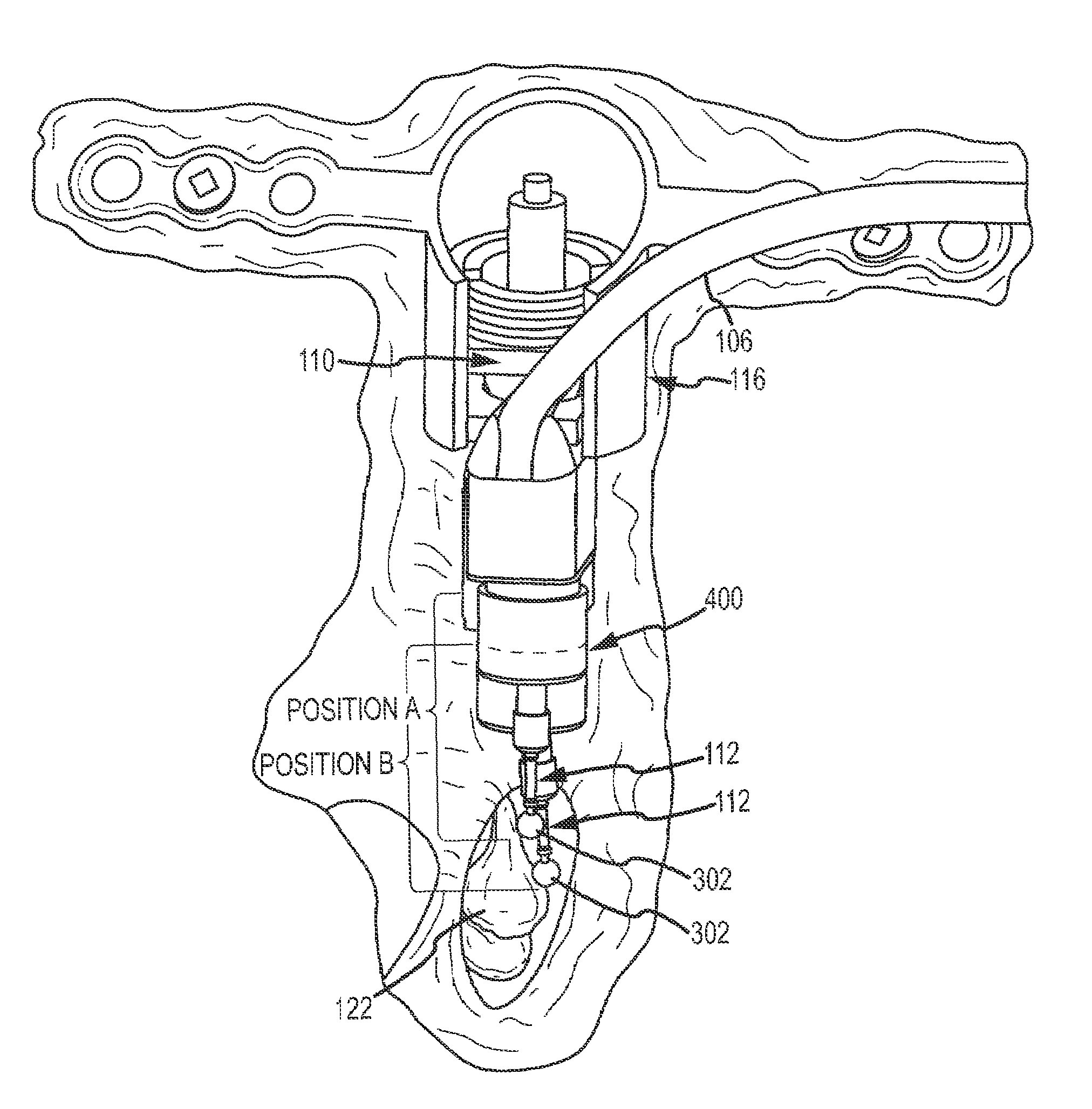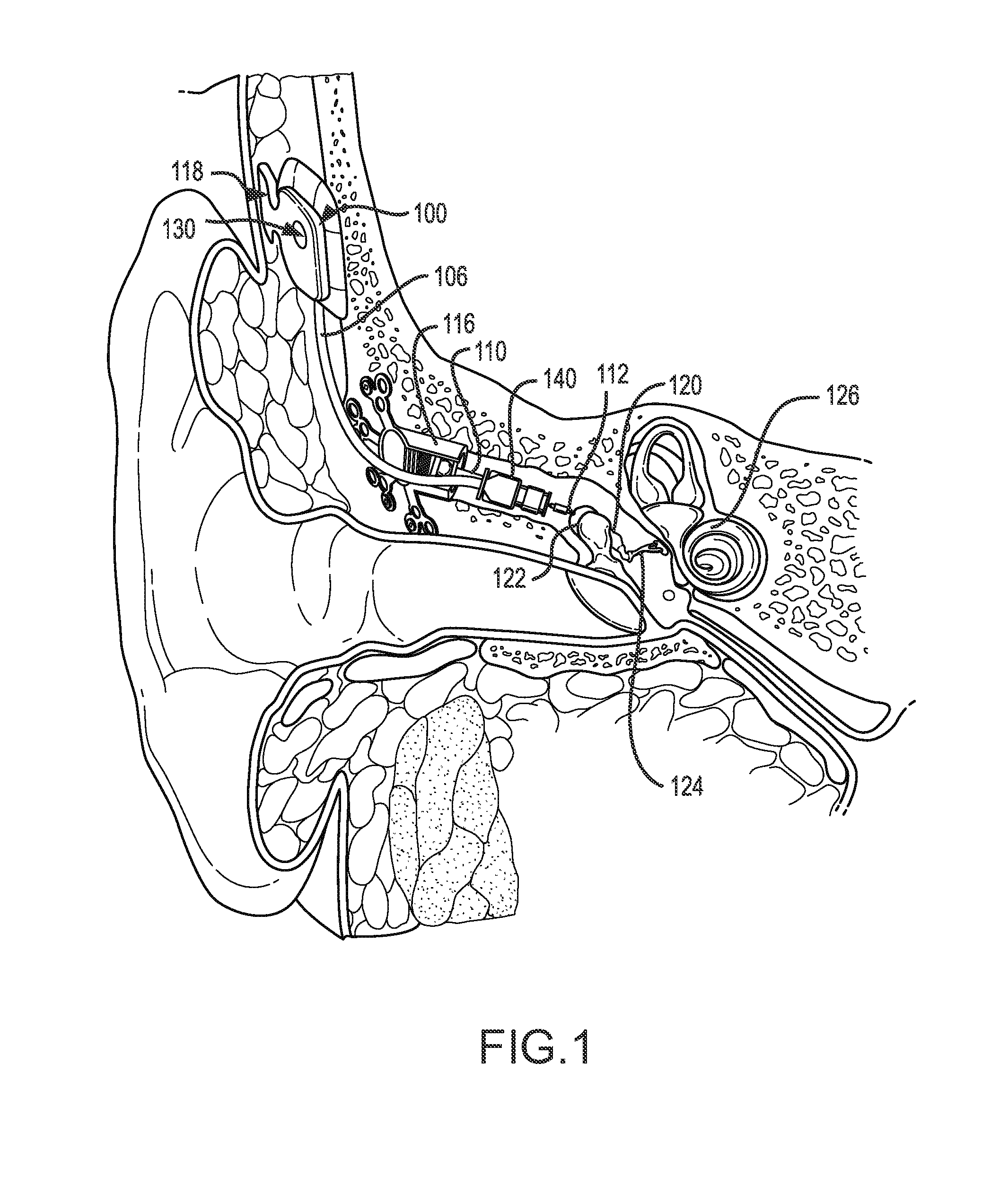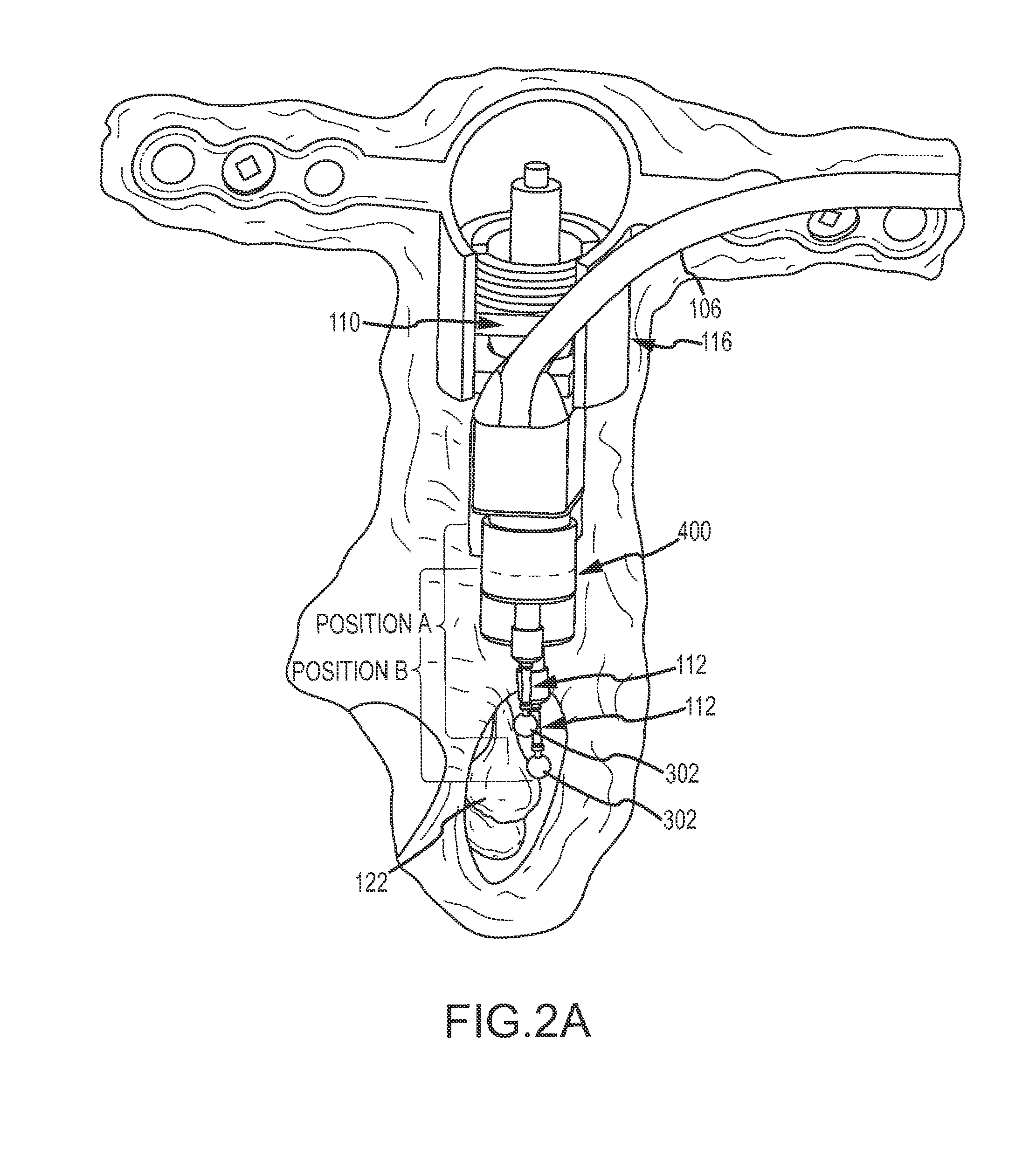Lateral coupling of an implantable hearing aid actuator to an auditory component
a technology of actuator and hearing aid, which is applied in the field of contact interface between an implantable hearing aid transducer and a hearing aid, can solve the problems of inability to burdensome and time-consuming laser ablation procedure, and inability to perform laser ablation, etc., to achieve the effect of facilitating disengaging an auditory component and simplifying the implantation procedur
- Summary
- Abstract
- Description
- Claims
- Application Information
AI Technical Summary
Benefits of technology
Problems solved by technology
Method used
Image
Examples
Embodiment Construction
[0031]FIG. 1 illustrates one application of the present invention. As illustrated, the application comprises a fully implantable hearing instrument system. As will be appreciated, aspects of the present invention may be employed in conjunction with semi-implantable hearing instruments as well.
[0032]In the illustrated system, a biocompatible implant housing 100 is located subcutaneously on a patient's skull. The implant housing 100 includes a signal receiver 118 (e.g., comprising a coil element) and a microphone 130 that is positioned to receive acoustic signals through overlying tissue. The signal receiver 118 may be utilized for transcutaneously re-charging an energy storage device within the implant housing 100 as well as for receiving program instructions for the hearing instrument system.
[0033]The implant housing 100 may be utilized to house a number of components of the fully implantable hearing instrument. For instance, the implant housing 100 may house an energy storage devic...
PUM
 Login to View More
Login to View More Abstract
Description
Claims
Application Information
 Login to View More
Login to View More - R&D
- Intellectual Property
- Life Sciences
- Materials
- Tech Scout
- Unparalleled Data Quality
- Higher Quality Content
- 60% Fewer Hallucinations
Browse by: Latest US Patents, China's latest patents, Technical Efficacy Thesaurus, Application Domain, Technology Topic, Popular Technical Reports.
© 2025 PatSnap. All rights reserved.Legal|Privacy policy|Modern Slavery Act Transparency Statement|Sitemap|About US| Contact US: help@patsnap.com



